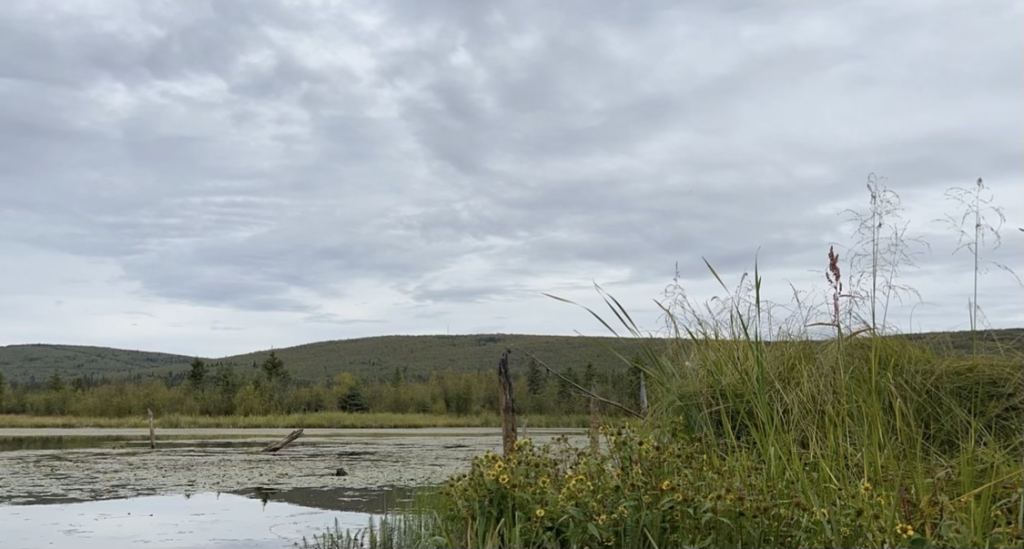A NASA scientist is finding newly formed lakes in Alaska that are belching greenhouse gases at a high rate. The main one is methane, a gas many people use in their natural gas-fueled grills. She’s tracking these emissions in one of Earth’s most remote regions—the Arctic.
It has millions of lakes, many of them hundreds or thousands of years old. But, only the youngest of them are releasing high amounts of methane. And that is due to the effects of climate change on these delicate environments.
Katey Walter Anthony is an ecologist at the University of Alaska-Fairbanks working with NASA to study this region. She points out that the appearance of younger, methane-belching lakes is a harbinger of things to come. “So that’s a concern for the future, when we think about permafrost carbon feedback, are areas that are newly thawed,” she said.
One of Walter Anthony’s jobs is to sample the gas content at the lakes in the region using methane collection devices that bob on the surface of the water. The bottles will be taken to the lab and the gas analyzed. But, in the field there’s a quick way to tell how much methane is in the lake: simply light a match at the end of the bottle’s valve.
A flame flares out in the presence of methane, almost like lighting a camp stove. Remove All Ads on Universe Today Join our Patreon for as little as $3! Get the ad-free experience for life Walter Anthony has been studying Big Trail Lake in Alaska. It’s a good example of a methane-rich thermokarst lake that formed less than 50 years ago, she said.
Big Trail is one of several at the focus of NASA’s Arctic Boreal Vulnerability Experiment (ABoVE) project which looks at how quickly climate change is affecting the Arctic regions. The “symptoms” of this change are reduced Arctic sea ice, thawing of permafrost soils, decomposition of long-frozen organic matter, widespread changes to lakes, rivers, coastlines, and alterations of ecosystem structure and function. The ABoVE project has been conducting an airborne campaign since 2017 as part of NASA’s Terrestrial Ecology program.
It studies parts of Alaska and Western Canada. Young lakes like Big Trail Lake are harbingers of things, says Walter Anthony as she tracks the formation of thermokarst in general. She is looking at how the changing climate will cause more of these lakes to form as more permafrost melts.
“Lakes like Big Trail are new, they’re young, and they are important because these lakes are what’s going to happen in the future,” she explained. Big Trail was created as subsurface permafrost thawed. As that underground ice melted, the ground it was frozen into collapsed and formed a watery sinkhole.
The fine details are more complex. When a permafrost layer thaws beneath lakes, things start to happen. In general, microbial activity increases, and pathways form in the permafrost.
At Big Trail Lake and others in the region, the microbes digest dead plants and other organic matter in the previously frozen soil in a process that produces carbon dioxide and methane. Sometimes, permafrost thaw can form long empty tubes or ‘chimneys’ under lakes. These allow methane and other gases trapped deep underground to escape.
This release of ‘geologic’ methane into the atmosphere is also happening at Esieh Lake, another of Katey Walter Anthony’s ABoVE study sites. “At Big Trail Lake, it’s like opening your freezer door for the first time and giving all the food in your freezer to microbes to decompose. As they decompose it, they are belching out methane gas,” she pointed out.
As the lakes freeze in the winter, methane bubbles prevent ice from forming. That creates areas of open water that allow methane to escape throughout the season. In other areas, the methane bubbles create frozen domes of ice on the surface of a lake.
It’s a natural process, but over the past few decades, it has been accelerated by climate change and warmer Arctic temperatures. “Once the ice has formed on these lakes, the rising methane bubbles will freeze into the ice,” explains Franz Meyer, Chief Scientist at the Alaska Satellite Facility in Fairbanks. Meyer is also one of the chief scientists for NISAR, a joint NASA and ISRO satellite that will study our planet—and the Arctic, in particular—using airborne radar.
It’s a challenging mission, part of NASA’s larger interest in tracking methane from space , the air, and the ground. “These bubbles that we see in the ice change the way that the radar signal interacts with the ice surface,” he explained. Radar waves bouncing off the surface of a lake or the land can detect roughened areas.
Some of that roughness comes from the methane bubbles just under the surface. A thermokarst lake with a high roughness likely has methane content in its bubbles. And, the science team finds that they tend to have higher methane emissions than smooth lakes.
Combining the airborne radar data with measurements collected in the field allows scientists to estimate how much methane lakes are emitting across a large region. The formation of new thermokarst lakes will continue as global climate change raises temperatures. The Arctic regions like the ones that Walter Anthony is studying are almost functioning like “canaries in the coal mine”.
Their higher-than-normal emissions will continue to pump greenhouse gases into the atmosphere, enhancing future cycles of melting and methane release. Alaska’s Newest Lakes Are Belching Methane Arctic Sea Ice News ABoVE.
From: universetoday
URL: https://www.universetoday.com/157827/alaska-has-new-lakes-unfortunately-theyre-releasing-a-lot-of-methane/



